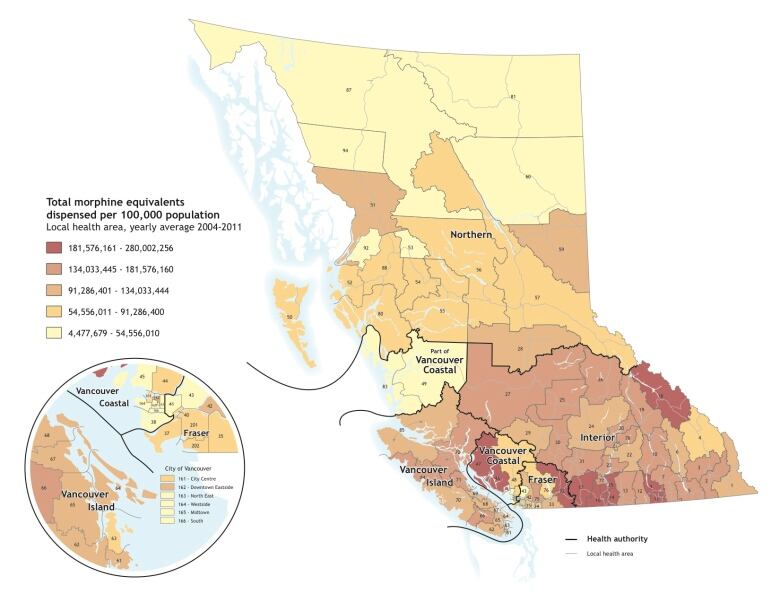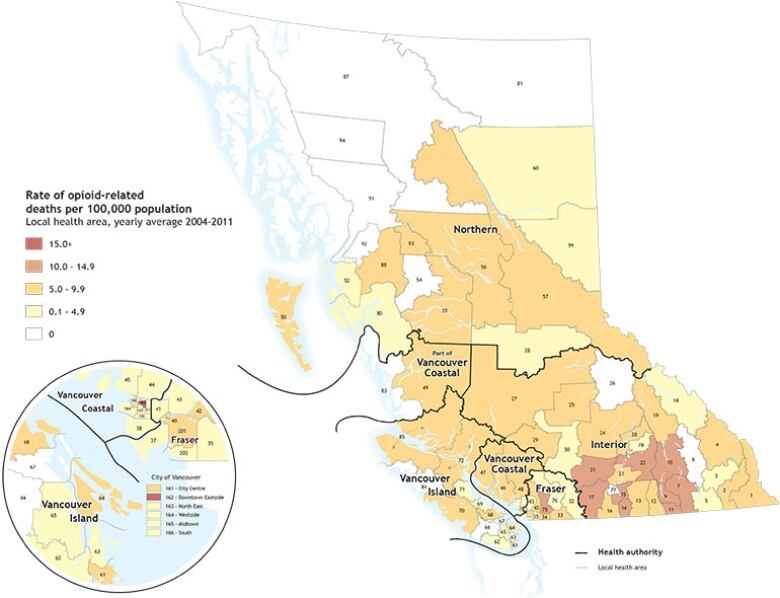Overprescription of opioids linked to overdose deaths in B.C.
Highest overdose death rates were in parts of the Fraser Valley and the southern Interior of B.C.

There is link between the overprescription of strong painkillers such as fentanyl, oxycodone, morphine, and hydromorphone in some parts of B.C. and higher rates of overdose deaths from the opioid drugs, according to a new UBC study.
"Our study shows that these prescription medicines are being used in ways that cause significant harm," said Steve Morgan, a professor in the School of Population and Public Health in a statement released by the university.
"Sometimes the harm is to the person for whom the prescription was written; other times, the harm is to people who appear to have borrowed, bought, or stolen these drugs. We need a solution that addresses both these issues."
To conduct the study the researchers collected data about the amount of opioids prescribed across 79 of the local health areas of B.C from 2004 to 2013. They found significant variation in prescription rates, with the highest levels on the Sunshine Coast, Fraser Valley, Southern Okanagan and Columbia Valley regions.

They then compared the prescription rates with overdose deaths recorded by B.C. Vital Statistics, and found the highest overdose death rates were in parts of the Fraser Valley and the southern Interior of B.C.

"If the higher rates of prescription opioid use in regions such as the southern Okanagan and Fraser Valley were brought down to the lower levels found in North Vancouver, West Vancouver or Richmond, approximately 30 deaths (23 men and 7 women) would have been avoided over the 10-year study period," concluded the study's authors.
The researchers also concluded many individuals who suffered a prescription opioid-related death did not have an active opioid prescription in the 60 days before death.












_(720p).jpg)


 OFFICIAL HD MUSIC VIDEO.jpg)
.jpg)



























































































